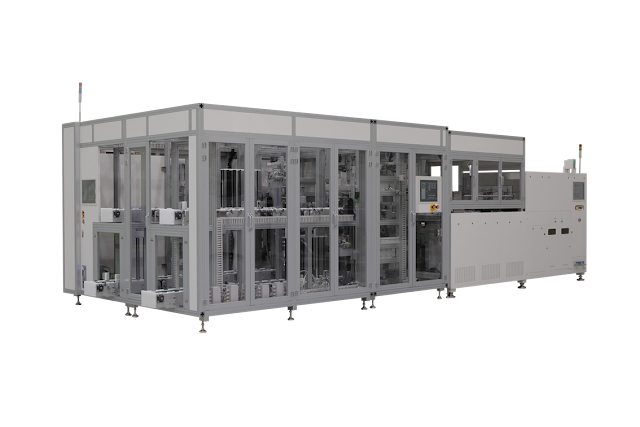As announced some weeks ago I am happy to have NCD as sponsor for the BALD Engineering ALD News blog. Here a review of the company and its fantastic ALD products follows and you should check the recently updated web page (http://www.ncdtech.co.kr/). NCD Co., Ltd. from Daejeon in Korea is a young and growing company founded in 2010 and is specialized in ALD original equipment manufacturing, which has been covered here on the ALD blog previously (here).
NCD is focusing on equipment development, process development, coating services, and process consulting for advanced ALD technologies for four business areas:
1. Solar
2. Display
3. Semiconductor
4. R&D
NCD has already had quite some successful years in entering the ALD equipment market and has built a very impressive customer base in Asia with main focus on the Korean domestic market, Japan, China and Taiwan.
As you may know, one of disadvantages of ALD is slow growth rate at typically an Å / cycle or so, that is to say ALD has a low throughput. In order to solve this problem, NCD has applied for patents for the high-throughput, high-volume and large-area every year. Based on these patents, NCD have developed their high-volume and large-area ALD system.
Here follows an overview of the ALD technology and equipment offering by NCD
NCD is focusing on equipment development, process development, coating services, and process consulting for advanced ALD technologies for four business areas:
1. Solar
2. Display
3. Semiconductor
4. R&D
NCD has already had quite some successful years in entering the ALD equipment market and has built a very impressive customer base in Asia with main focus on the Korean domestic market, Japan, China and Taiwan.
As you may know, one of disadvantages of ALD is slow growth rate at typically an Å / cycle or so, that is to say ALD has a low throughput. In order to solve this problem, NCD has applied for patents for the high-throughput, high-volume and large-area every year. Based on these patents, NCD have developed their high-volume and large-area ALD system.
Here follows an overview of the ALD technology and equipment offering by NCD
1) High-volume ALD
- GS ALD :
surface passivation for c-Si solar cell
- MC ALD : dielectric for capacitor and
encapsulation for micro display (OLED)
2)
Large-area ALD
- TS ALD : buffer layer for CIGS solar cell
- GD ALD : encapsulation for OLED
LucidaTM
GS1200 ALD with automation system
NCD has paved the way for high volume manufacturing by a range of ALD systems (see above). Worth highlighting here is especially the Lucida™ GS1200 ALD system applied for high efficiency solar cells at both Hyundai Heavy Industries and LG Electronics etc. The GS series from NCD can realize Passivation for c-Si solar cell at an impressive through put of >3400 wph @ 10nm-Al2O3.
For the large area CIGS thin film soar and OLED display market, NCD has developed two main platforms - the TS and the GD series respectively. ALD chamber clustering is an approach used by many rather than large stand-alone batch tools.
For the large area CIGS thin film soar and OLED display market, NCD has developed two main platforms - the TS and the GD series respectively. ALD chamber clustering is an approach used by many rather than large stand-alone batch tools.
LucidaTM
GD600
ALD in R&D Lab.
It will be very exciting to follow NCD the next years when the ALD market continues its growth in many high-volume and large-area ALD applications.



%20(1).png)































